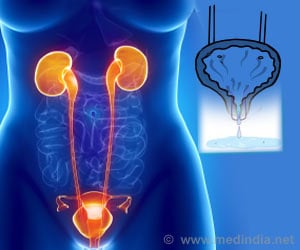Patient safety incidents at the nation’s hospitals rose three percent over the years 2003 to 2005, but the nation's top-performing hospitals had a 40 percent.
Patient safety incidents at the nation’s hospitals rose three percent over the years 2003 to 2005, but the nation's top-performing hospitals had a 40 percent lower rate of medical errors when compared with the poorest-performing hospitals, according to the largest annual study of patient-safety issued today by HealthGrades, the leading independent healthcare ratings company.
The HealthGrades study of 40.56 million Medicare hospitalization records over the years 2003 to 2005 also found:· Patient-safety incidents continue to rise in American hospitals, with 1.16 million preventable patient-safety incidents occurring over the three years studied among Medicare patients in the nation's hospitals, an incidence rate of 2.86 percent.
· 247,662 deaths were potentially preventable over the three years, and Medicare patients who had one or more patient-safety incidents had a one-in-four chance of dying.
· The excess cost to hospitals was $8.6 billion over three years, with some of the most common incidents proving to be the most costly.
· Ten of the 16 patient-safety incidents tracked worsened from 2003 to 2005, by an average of almost 12 percent, while seven incidents improved, on average, by six percent. Patient-safety incidents with the greatest increase in incident rates were post operative sepsis (34.28 percent), post-operative respiratory failure (18.70 percent) and selected infections due to medical care (12.23 percent).
· Patient-safety incidents with the highest incidence rates were decubitus ulcer, failure to rescue and post-operative respiratory failure.
"The cost of medical errors at American hospitals in both mortality and dollar terms continues to be significant, and the 'chasm in quality' between the nation's top and bottom hospitals, which HealthGrades has documented in this and other studies, remains." said Dr. Samantha Collier, HealthGrades' chief medical officer and the primary author of the study. "But the nation's best-performing hospitals are providing benchmarks for the hospital industry, exercising a vigilance that resulted in far fewer inhospital incidents among the Medicare patients studied." The fourth annual HealthGrades Patient Safety in American Hospitals Study applies methodology developed by the U.S. Department of Health and Human Services' Agency for Healthcare Research and Quality to identify the incident rates of 13 patient safety incidents among Medicare patients at virtually all of the nation's nearly 5,000 nonfederal hospitals. Additionally, HealthGrades applied its methodology to identify the best-performing hospitals, or Distinguished Hospitals for Patient Safety™, which represent the top five percent of all U.S. hospitals. Ratings for individual hospitals were posted today to HealthGrades' consumer Web site, www.healthgrades.com.
The following are the 16 patient-safety incidents studied:
· Accidental puncture or laceration
· Complications of anesthesia
· Death in low-mortality DRGs
· Decubitus ulcer
· Failure to rescue
· Foreign body left in during procedure
· Iatrogenic pneumothorax
· Selected infections due to medical care
· Post-operative hemorrhage or hematoma
· Post-operative hip fracture
· Post-operative physiologic metabolic derangement
· Post-operative pulmonary embolism or deep vein thrombosis
· Post-operative respiratory failure
· Post-operative sepsis
· Post-operative abdominal wound dehiscence
· Transfusion reaction
Distinguished Hospital Awards and Findings
Of the nearly 5,000 hospitals studied, the HealthGrades study identified 242 hospitals – those in the top five percent of all hospitals -- to serve as a benchmark against which other hospitals can be evaluated, naming them Distinguished Hospitals for Patient Safety.
On average, these hospitals had a 40 percent lower rate of patient-safety incidents when compared with the poorest-performing hospitals. If all hospitals performed at the level of the Distinguished Hospitals for Patient Safety, the study found:
· Approximately 206,286 patient-safety incidents and 34,393 Medicare deaths could have been avoided; and
· $1.74 billion could have been saved.
To be ranked in overall patient-safety performance, hospitals had to be rated in at least 19 of the 28 procedures and diagnoses rated by HealthGrades and have a current overall HealthGrades star rating of at least 2.5 out of 5.0. The final ranking set included 752 teaching hospitals and 857 non-teaching hospitals. The top 15 percent, or 242 hospitals, were identified as Distinguished Hospitals for Patient Safety, and represent less than five percent of all U.S. hospitals examined in the study.
Advertisement
Source-Eurekalert
SRM





